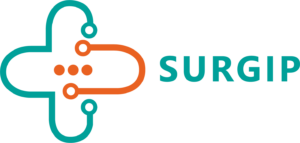Healthcare facilities are at the forefront of delivering vital services to communities, yet the complexities of managing operations efficiently can present significant challenges. Imagine a solution that revolutionizes the way healthcare facilities schedule procedures, allocate resources, and ensure compliance with regulatory standards. Enter healthcare facility management software – a cutting-edge tool that holds the key to unlocking streamlined operations, cost savings, and enhanced patient care quality. In this blog post, we delve into the essential aspects of leveraging healthcare facility management software to transform healthcare operations and drive sustainable success.
Key Features to Look for in Healthcare Facility Management Software
In the world of healthcare facility management software, it is crucial to understand the key features that can truly make a difference in streamlining operations and enhancing efficiency. When selecting the right software for your healthcare facility, consider the following essential features:
Automated Scheduling and Resource Allocation
-
Seamless scheduling of surgical procedures, appointments, and staff shifts
-
Intelligent resource allocation based on real-time data and demand forecasting
-
Automated notifications and reminders for upcoming tasks and appointments
Real-Time Reporting and Analytics Capabilities
-
Robust reporting tools that provide insights into operations and performance metrics
-
Customizable dashboards for quick access to crucial data points
-
Data visualization features for easy interpretation of complex information
Integration with Existing Systems
-
Compatibility with EMR (Electronic Medical Records) systems for seamless data exchange
-
Integration with financial and HR systems for comprehensive management
-
API availability for customization and integration with third-party applications
Compliance with Regulatory Standards
-
Built-in compliance checks for HIPAA, GDPR, and other data protection regulations
-
Audit trails and security measures to ensure data integrity and patient privacy
-
Regular updates to align with evolving regulatory requirements
By prioritizing these key features when evaluating healthcare facility management software, healthcare facilities can enhance their operational efficiency, improve patient care, and stay ahead in today's dynamic healthcare landscape.
Implementing Healthcare Facility Management Software: Best Practices
When it comes to implementing healthcare facility management software, following best practices can ensure a smooth transition and maximum benefit realization for healthcare organizations. Consider the following steps:
Assessing Current Workflow Challenges
-
Conduct a comprehensive assessment of existing processes and identify pain points
-
Engage key stakeholders to gather insights and feedback on process inefficiencies
-
Set clear goals and objectives for the implementation to address specific workflow challenges
Customizing the Software to Fit Specific Needs
-
Work closely with the software provider to tailor the solution to the unique requirements of the healthcare facility
-
Configure the software settings to align with the organization's workflows and operational preferences
-
Conduct thorough testing and validation to ensure the software meets the specified needs
Staff Training and Onboarding Strategies
-
Provide training sessions for staff members to familiarize them with the software features and functionalities
-
Offer ongoing support and guidance to address any user concerns or questions
-
Implement a phased approach to onboarding to minimize disruptions to daily operations
Continuous Monitoring and Improvement
-
Establish key performance indicators (KPIs) to track the impact of the software on operational efficiency
-
Regularly review and analyze data generated by the software to identify areas for improvement
-
Stay updated on software updates and enhancements to leverage new features and capabilities
By following these best practices in implementing healthcare facility management software, healthcare organizations can optimize their operations, enhance patient care, and achieve sustainable long-term success.
Maximizing ROI with Healthcare Facility Management Software
When considering the implementation of healthcare facility management software, one of the primary concerns for healthcare organizations is maximizing return on investment (ROI). By focusing on key strategies and practices, healthcare facilities can ensure that the software delivers substantial benefits and efficiencies over time.
Calculating Cost Savings and Operational Efficiency Gains
-
Conduct a cost-benefit analysis to quantify the financial impact of implementing the software
-
Measure the reduction in administrative costs, improved resource utilization, and time savings
-
Evaluate how the software streamlines operations and enhances overall efficiency to generate tangible ROI
Long-Term Benefits for Healthcare Organizations
-
Consider the scalability of the software solution to accommodate growth and evolving needs
-
Assess the potential for improved patient outcomes, increased staff satisfaction, and enhanced quality of care
-
Recognize the long-term value of investing in technology that can adapt to changing healthcare environments
Case Studies of Successful Implementations
-
Explore real-world examples of healthcare facilities that have successfully implemented and benefited from facility management software
-
Review specific use cases, challenges faced, and the positive outcomes achieved through software adoption
-
Learn from industry best practices and success stories to inform your own implementation strategy
Future Trends in Healthcare Facility Management Software
-
Stay informed about emerging trends and advancements in healthcare facility management software
-
Explore innovations such as AI-driven predictive analytics, IoT integration, and telehealth capabilities
-
Anticipate how future technology developments can further optimize operations and enhance patient care
By prioritizing ROI, embracing long-term benefits, learning from successful case studies, and staying attuned to future trends, healthcare organizations can maximize the value derived from healthcare facility management software and drive continued success in an ever-evolving healthcare landscape.
Ensuring Data Security and Compliance with Healthcare Facility Management Software
When integrating healthcare facility management software into operations, data security and compliance with healthcare regulations are paramount considerations. Safeguarding sensitive patient information and ensuring adherence to industry standards are critical for maintaining trust and integrity within the healthcare ecosystem.
HIPAA Compliance and Data Protection Measures
-
Implement robust data encryption protocols to secure patient health information
-
Adhere to HIPAA regulations governing the storage and transmission of sensitive data
-
Conduct regular security assessments and audits to identify and mitigate potential vulnerabilities
Secure Data Storage and Encryption
-
Utilize secure cloud storage solutions with encryption capabilities for data protection
-
Implement access controls and user authentication mechanisms to restrict unauthorized data access
-
Ensure data backup and disaster recovery protocols are in place to prevent data loss or breaches
Regular Audits and Updates for Compliance
-
Conduct periodic audits to assess compliance with regulatory requirements and internal policies
-
Stay informed about changes in healthcare regulations and update software accordingly
-
Provide ongoing training to staff members on data security best practices and compliance guidelines
Addressing Data Privacy Concerns
-
Communicate transparently with patients about data collection practices and privacy safeguards
-
Establish clear policies and procedures for handling patient data in accordance with privacy laws
-
Respond promptly to data security incidents and take corrective actions to prevent future breaches
By prioritizing data security, ensuring regulatory compliance, and addressing data privacy concerns, healthcare facilities can instill confidence in patients and stakeholders while leveraging the benefits of healthcare facility management software to drive operational efficiencies and improve patient care quality.
Conclusion: Transforming Healthcare Operations with Healthcare Facility Management Software
In conclusion, the adoption of healthcare facility management software represents a transformative opportunity for healthcare organizations to optimize their operations, enhance patient care delivery, and drive sustainable long-term success. By harnessing the power of advanced scheduling solutions, real-time analytics, and seamless integration capabilities, healthcare facilities can streamline workflows, improve resource allocation, and achieve significant cost savings.
Embracing Innovation for Enhanced Efficiency
-
Automated Scheduling: Streamlining the scheduling of surgeries, appointments, and staff shifts to minimize downtime and maximize efficiency.
-
Real-Time Reporting: Leveraging advanced analytics tools to gain insights into operational performance and make data-driven decisions.
-
Regulatory Compliance: Ensuring adherence to healthcare regulations and data security standards to protect patient information and maintain trust.
As we look to the future, the evolution of healthcare facility management software holds promise for further innovation, with trends such as AI-driven predictive analytics and IoT integration set to revolutionize healthcare operations. By staying informed, remaining agile, and continuously optimizing software usage, healthcare organizations can stay ahead of the curve and lead the way in modern healthcare delivery.
External Link: Epic Systems – Learn more about how industry-leading companies are shaping the future of healthcare technology.
In summary, the implementation of healthcare facility management software is not just a technological upgrade but a strategic investment in the efficiency, quality, and sustainability of healthcare services. By embracing change, fostering collaboration, and prioritizing patient-centric care, healthcare facilities can pave the way for a brighter, more efficient future in the ever-evolving landscape of healthcare management.
How does healthcare facility management software help improve operational efficiency?
Healthcare facility management software automates scheduling, optimizes resource allocation, and provides real-time analytics to identify bottlenecks and inefficiencies in operations. By streamlining processes and enhancing data-driven decision-making, the software boosts operational efficiency and cost-effectiveness.
Is healthcare facility management software compliant with industry regulations such as HIPAA?
Yes, reputable healthcare facility management software providers ensure compliance with industry regulations such as HIPAA by implementing robust data security measures, encryption protocols, and audit trails to protect sensitive patient information and maintain regulatory standards.
Can healthcare facility management software integrate with existing electronic medical records (EMR) systems?
Many healthcare facility management software solutions offer seamless integration capabilities with existing EMR systems, enabling efficient data exchange, streamlined workflows, and enhanced coordination between different aspects of healthcare operations.
How can healthcare facility management software support staff training and onboarding processes?
Healthcare facility management software typically includes user-friendly interfaces, training modules, and ongoing support to facilitate staff training and onboarding. By simplifying the learning curve and providing resources for skill development, the software enhances staff readiness and proficiency in utilizing the system.
What are the long-term benefits of investing in healthcare facility management software?
Investing in healthcare facility management software yields long-term benefits such as improved patient care quality, increased operational efficiency, enhanced staff productivity, and scalability to adapt to evolving healthcare needs. The software empowers healthcare organizations to drive sustainable success and innovation in the long run.

